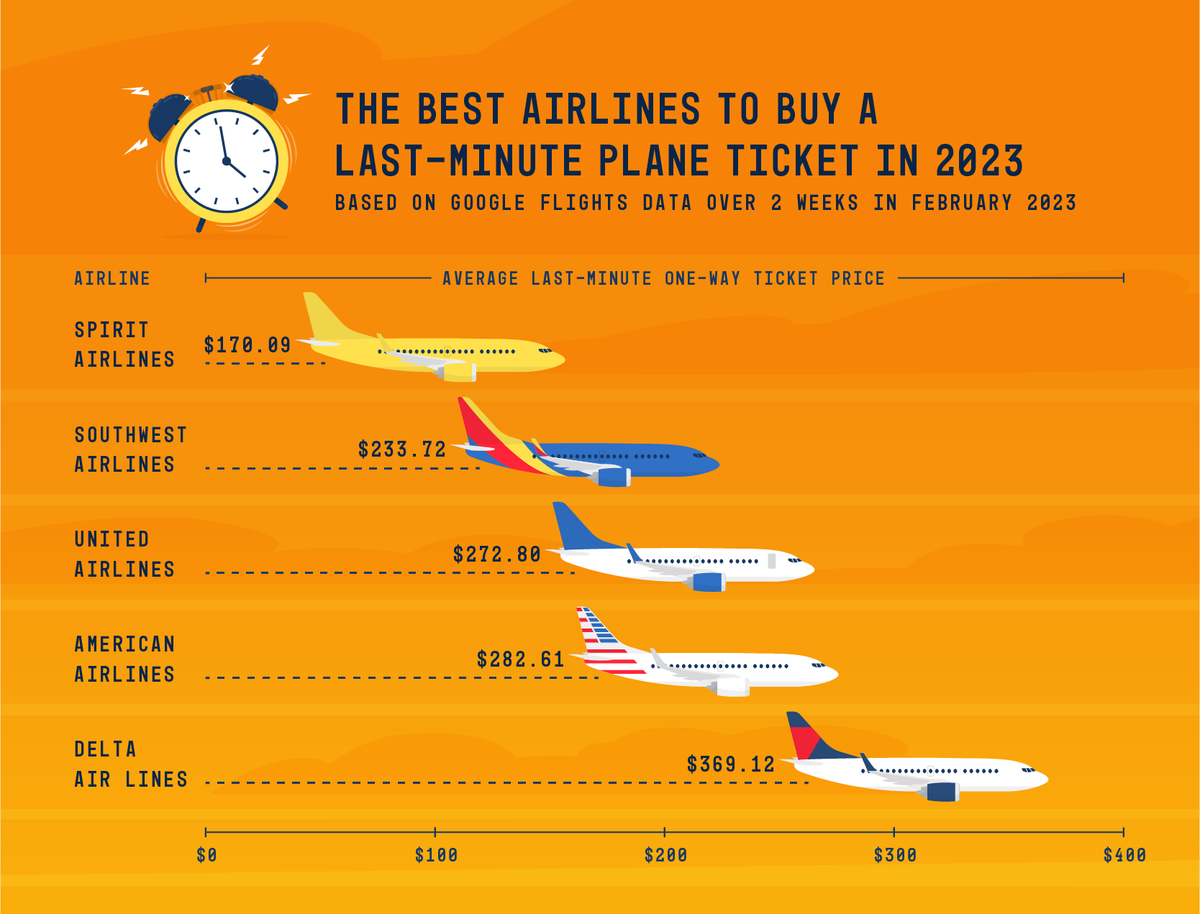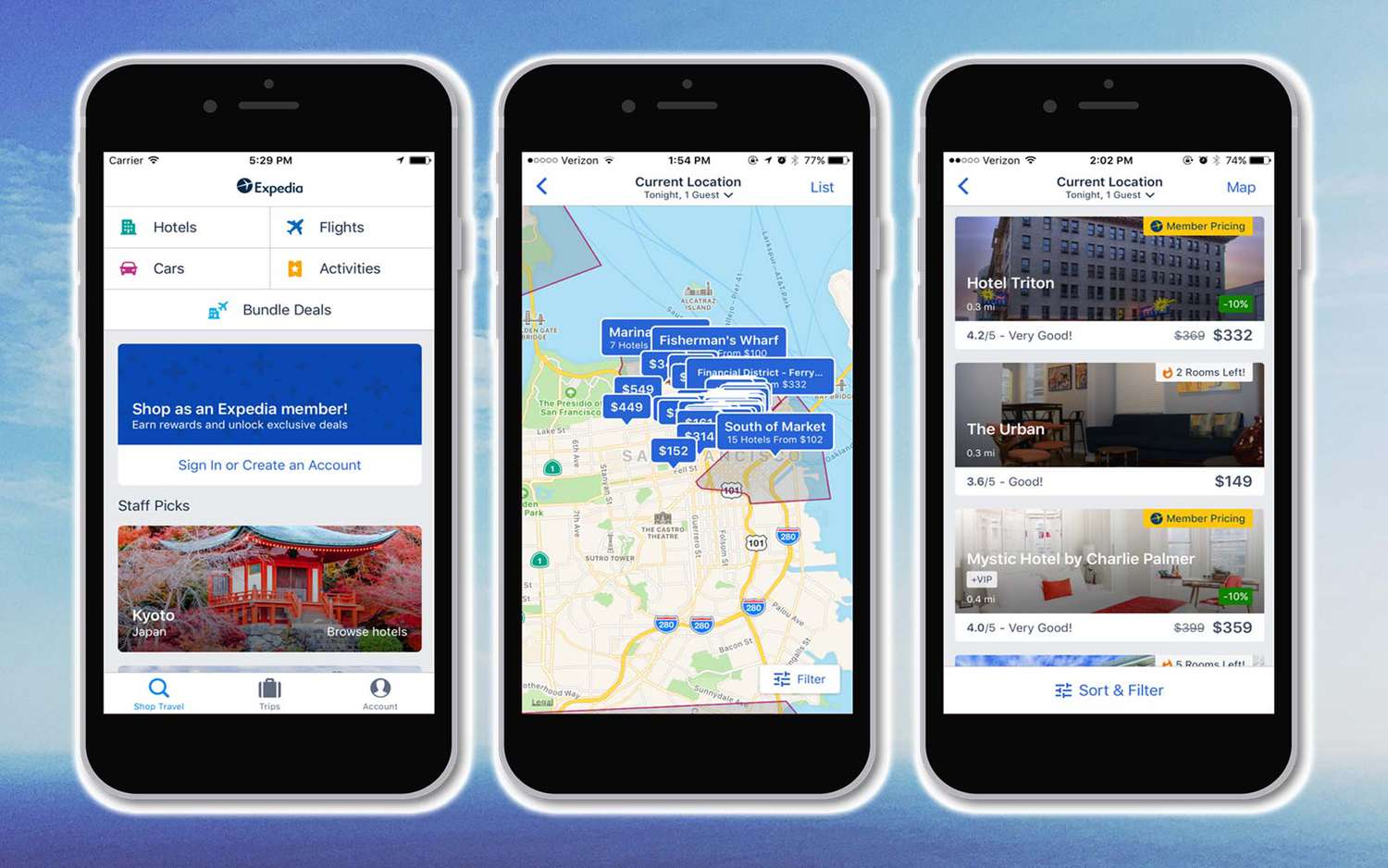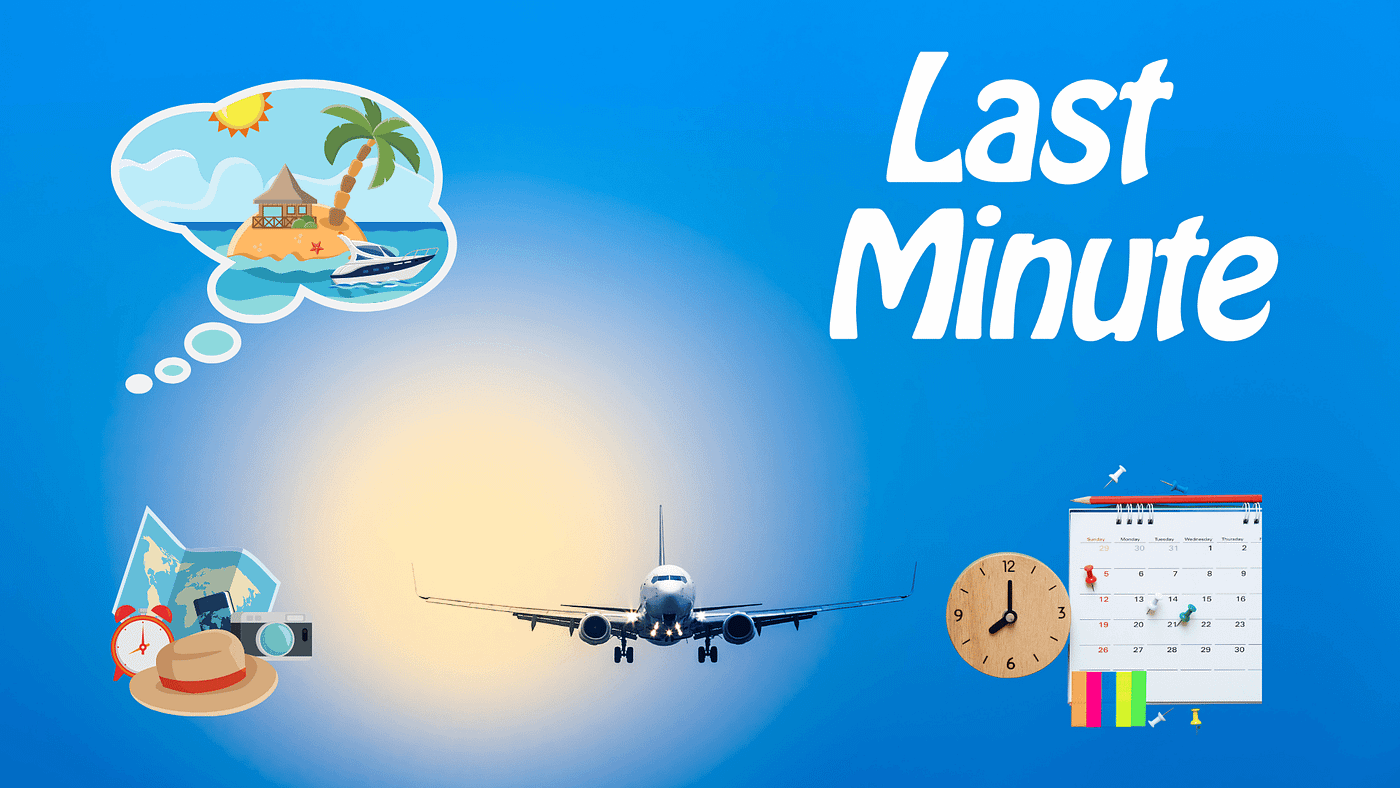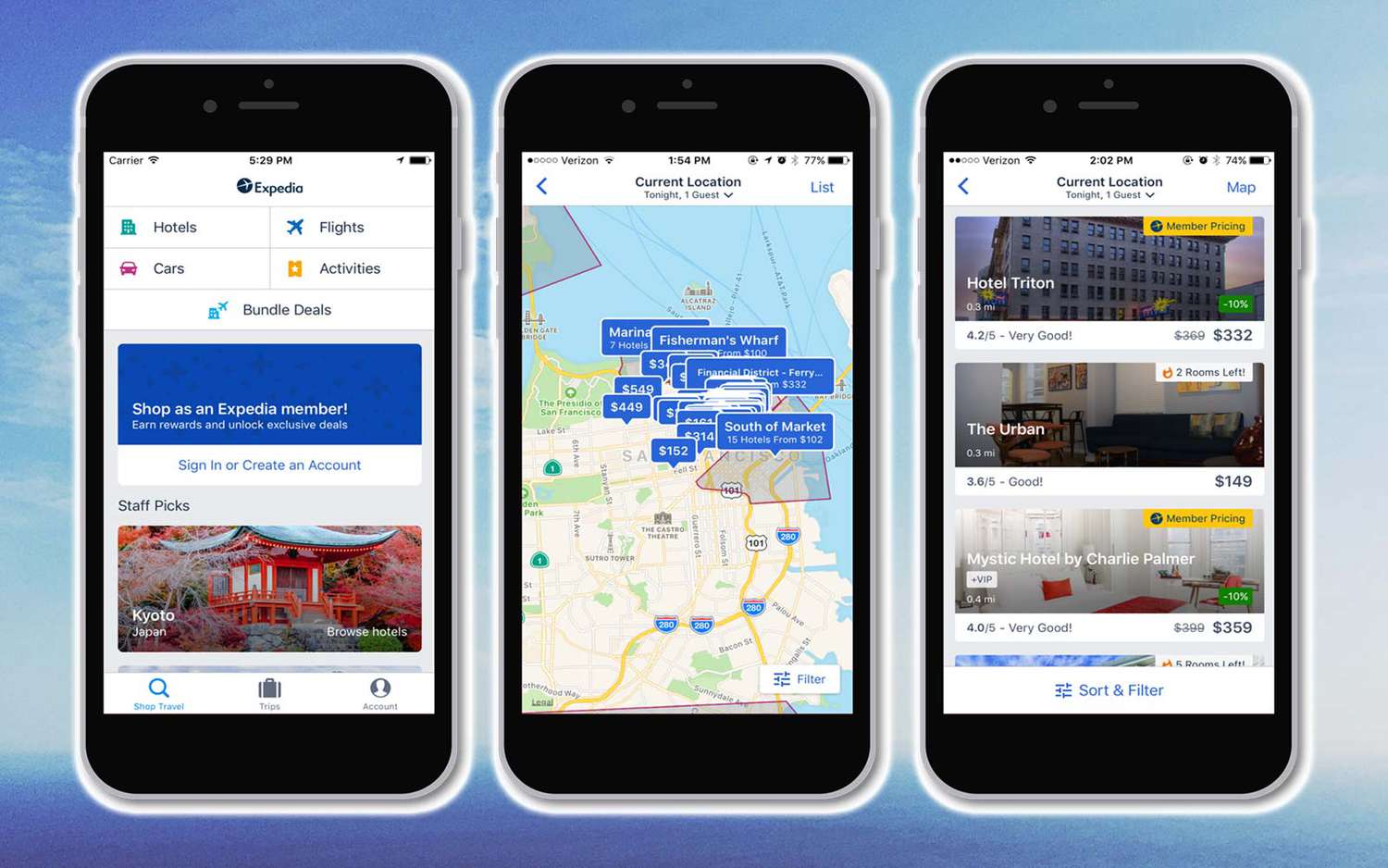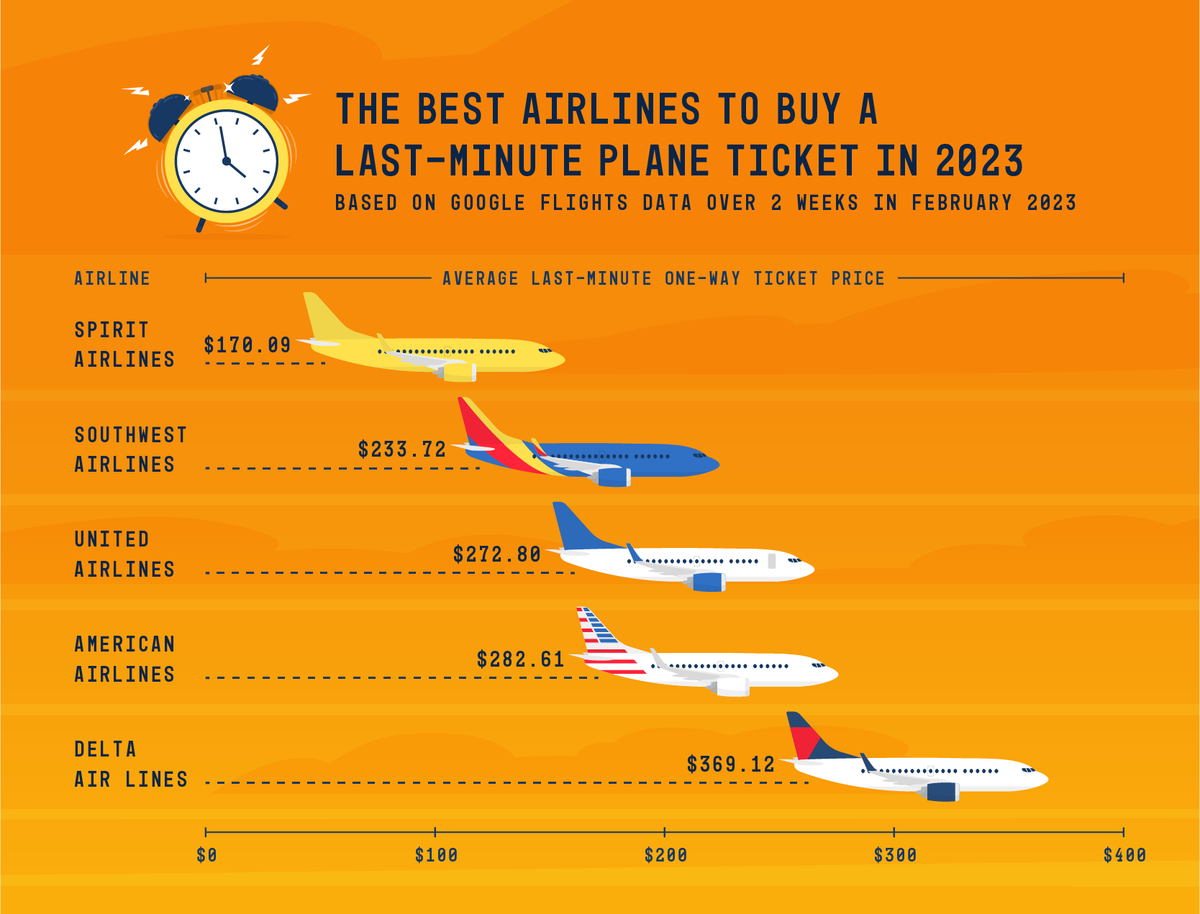
In the fast-paced world of travel, seizing the moment can often translate into unexpected opportunities. Consider that some airlines, like Southwest and Allegiant Air, have honed the art of offering last-minute flight deals. These airlines cleverly manage their unsold inventory to create irresistible offers, enticing adventurous souls ready to embark on spontaneous journeys.
Historically, budget airlines have been at the forefront of specializing in last-minute flights. Ryanair, for instance, has often reeled in travelers with deals just days before departure, a strategy that resonates well with last-minute planners. A 2022 report noted that nearly 20% of flights booked last-minute were with low-cost carriers, showing a strong market demand met by these nimble operators.

Why Do Airlines Offer Last-Minute Flights?
Airlines offer last-minute flights to fill seats that would otherwise remain empty. An empty seat generates no revenue, so even selling it at a lower price is beneficial. This strategy helps the airline cover costs, such as fuel and staff wages. It also provides travelers with affordable options for quick travel plans. The dynamic nature of travel plans means that airlines often need to adjust their pricing strategy to maximize occupancy.
Another reason airlines offer last-minute deals is to compete with other carriers. In a competitive market, attracting spontaneous travelers can make a big difference in profits. Airlines can lure bargain hunters who prefer to wait until the last minute for the best deals. This approach promotes brand loyalty among travelers who frequently look for discounts. In this way, customers form a preference for airlines known for these deals.
Last-minute flights are also a practical solution for airlines facing sudden cancellations. When flights get canceled, airlines need to quickly fill those open seats. Last-minute sales help reduce the impact of such disruptions. It ensures that the plane remains at optimal capacity. This is particularly useful during peak travel seasons.
Moreover, offering last-minute flights allows airlines to adjust to unexpected changes in demand. Whether it’s due to a surge of holiday travelers or a big event in a city, airlines can respond swiftly. This flexibility helps airlines manage their capacity efficiently. It also provides more options for travelers who need to fly without much notice. Thus, airlines maintain a balanced supply and demand scenario in a dynamic travel industry.
The Strategy Behind Last-Minute Offers
Airlines employ a variety of strategies to make last-minute offers attractive and profitable. One approach is using advanced algorithms to track booking patterns and adjust prices accordingly. By analyzing data, airlines can predict demand and strategically offer discounts on remaining seats. This ensures optimal revenue while providing deals for flexible travelers. Such strategic adjustments keep the airlines competitive in the market.
Another tactic involves partnership deals with hotels and travel agencies. Collaboration allows airlines to bundle flights with hotel stays or car rentals, creating value for travelers. These bundles are often advertised through newsletters or special promotions, targeting spontaneous travelers. Airlines aim to boost overall sales while offering travelers affordable and convenient packages. This approach capitalizes on cross-industry relationships to enhance customer experience.
Additionally, airlines leverage social media and mobile apps for real-time marketing. Instant notifications about last-minute deals can reach a wider audience quickly. This strategy encourages swift decision-making from prospective travelers. By tapping into digital platforms, airlines maximize their outreach and capture potential customers. This method proves crucial in attracting tech-savvy passengers looking for quick deals.
Moreover, membership programs play a key role in the last-minute offering strategy. Airlines often provide exclusive deals to loyalty program members or frequent flyers. This not only fills seats but also strengthens customer loyalty. Members feel valued when they receive special perks and offers. Thus, airlines maintain a loyal customer base while effectively managing inventory.
Top Airlines Specializing in Last-Minute Flights
Several airlines have gained a reputation for offering excellent last-minute deals. Southwest Airlines is renowned for its no-change-fee policy, making it a favorite among spontaneous travelers. Their frequent sales make it easier for passengers to find affordable last-minute tickets. Similarly, Allegiant Air is also well-known for its budget-friendly, last-minute options. These airlines have mastered the balance between affordability and convenience for travelers.
JetBlue offers competitive last-minute fares, often featuring unique vacation packages. By combining flights with hotels or activities, JetBlue creates an all-in-one experience for adventurous flyers. Their promotions are often advertised through emails or on their website, giving travelers plenty of opportunities to snatch up deals. Additionally, loyal JetBlue customers can enjoy benefits through their TrueBlue program. This program enhances the overall value of their travel experience.
Ryanair, Europe’s largest low-cost airline, frequently offers last-minute deals that target budget-conscious travelers. By maintaining a high volume of flights, they can reduce prices sharply closer to departure dates. Ryanair leverages its extensive route network to provide flexibility and choice for passengers. This approach keeps them competitive and consistently popular among travelers. Ryanair is a prime example of an airline effectively using last-minute pricing strategies.
Delta Air Lines also slides into the spotlight with their SkyMiles program and flash sales. These occasional promotions give passengers the chance to book last-minute flights at reduced rates. SkyMiles members receive exclusive access to these deals, enhancing their travel options. Delta’s vast route network ensures a wide range of last-minute options are available. Passengers appreciate such reliability when making spontaneous travel decisions.
Understanding Flight Volume and Frequency
Flight volume and frequency play crucial roles in airline operations. They determine how often planes take off and how many passengers they can accommodate. A higher flight frequency allows airlines to offer more choices to passengers. It also means they can respond quickly to demand changes. In busy airports, this can be the deciding factor in a traveler’s decision.
Airlines use flight volume data to plan their routes and schedules efficiently. By analyzing trends, they can identify popular routes and align their schedules accordingly. During peak seasons, airlines might increase flight frequency to popular destinations. This approach helps maximize both seat occupancy and revenue. Airlines strive to keep their planes filled with passengers at all times.
There is an intriguing connection between flight frequency and last-minute deals. Airlines often release last-minute tickets for flights with available seats. Flights with higher frequencies have better chances of offering these deals. Passengers can take advantage of competitive pricing, especially on less crowded flights. This helps airlines maintain profitability despite unexpected fluctuations in demand.
Flight volume also affects operational efficiency. High volumes require precise planning of staffing, aircraft maintenance, and turnover times. Efficient planning minimizes delays and ensures smooth operations. For passengers, this means a greater likelihood of flying on time. Airlines work hard to maintain high efficiency across their networks.
Understanding flight volume and frequency helps airlines meet customer needs effectively. It allows them to offer reliable and flexible travel options. Passengers benefit from having more choices when booking flights, especially at the last minute. Airlines balance their operations to provide value while sustaining their business. This balance is crucial for their long-term success.
Seasonal and regional travel demand also influences flight frequency. During holidays, more flights to popular vacation spots may be available. Conversely, in off-peak periods, frequency may decrease. Airlines must adapt to these changes to maintain service standards. They analyze multiple data points to make smart scheduling decisions.
Case Study: Strategizing Last-Minute Flights
Last-minute flight strategies can be seen in the practices of several innovative airlines. For example, Southwest Airlines has a history of releasing unsold seats at competitive prices shortly before departure. These last-minute deals attract a large number of flexible travelers. Their strategy reduces empty seats and increases overall revenue. This approach has been successful in keeping planes filled while offering passenger value.
Another airline that has mastered this strategy is Ryanair. With their extensive route network, they can offer last-minute flash sales. These sales are marketed through social media and email alerts, reaching millions quickly. By filling seats and covering costs, Ryanair ensures its operations remain profitable. This strategy reinforces Ryanair’s reputation for cheap flights.
Delta Air Lines also provides intriguing examples of last-minute flight strategies. Their SkyMiles program offers exclusive last-minute deals to loyal members. This not only boosts ticket sales but also incentivizes passengers to engage with the loyalty program. Delta’s ability to fill seats efficiently benefits both the airline and consumers. Their dynamic pricing helps maintain a balance between demand and capacity.
Airlines like JetBlue leverage digital platforms to maximize their last-minute offers. By using mobile apps, they can send notifications about available seats close to departure. This strategy ensures potential customers receive timely information to make quick decisions. The convenience of booking with just a few taps appeals to many travelers. JetBlue benefits from maintaining strong digital engagement with its user base.
Table illustrating key strategic elements:
| Airline | Strategy | Benefit |
|---|---|---|
| Southwest | Last-minute sales | Reduced empty seats |
| Ryanair | Flash sales | Increased revenue |
| Delta | SkyMiles promotions | Loyalty engagement |
| JetBlue | Mobile alerts | Instant bookings |
The effectiveness of these strategies lies in their flexibility and adaptability. Airlines that understand market demands can adjust quickly to fill seats. These last-minute tactics are vital components in their business models. By studying these case studies, other airlines can learn effective ways to approach last-minute sales. This knowledge benefits both the industry and travelers seeking affordable options.
Frequently Asked Questions
Airlines employ various strategies to offer last-minute flights, making travel plans flexible and affordable. Below are some common questions travelers have about scoring these spontaneous deals.
1. How can I find last-minute flight deals?
Searching for last-minute flight deals requires a bit of flexibility and patience. Start by checking budget airline websites and signing up for alerts on travel apps. Social media channels often share flash sales, so keep an eye on those too. Using multiple platforms increases your chances of snagging a good deal.
Being open to different destinations can also lead to exciting travel opportunities. Sometimes the best deals appear when you’re not set on a specific location. Consider airports near your intended destination, as flying into these can sometimes be cheaper. Flexibility with your travel dates also helps in finding better deals, especially if weekday travel is an option.
2. Why do airlines offer discounts on last-minute flights?
Airlines offer discounts on last-minute flights to fill unsold seats, ensuring they maximize revenue. An empty seat earns nothing, so any fare helps offset operating costs like fuel and staff. These last-minute offers also help airlines remain competitive with other carriers in the market.
Additionally, offering last-minute discounts can foster customer loyalty. Travelers who snag these deals may become frequent flyers or join loyalty programs, benefiting the airline in the long run. Airlines can also use these opportunities for branding, promoting themselves as affordable options for spontaneous travel.
3. Which tools can help in booking last-minute flights?
Numerous tools can aid in booking last-minute flights, making the process quicker and easier. Mobile apps like Hopper or Skyscanner are popular for monitoring airfare trends and offering notifications on price drops. Websites like Google Flights allow you to explore multiple airline options simultaneously.
Using these tools, you can set alerts for specific destinations and receive updates when prices fall. Additionally, travel forums and social media groups can offer insider tips on current promotions. By utilizing these resources, you stay informed and ready to book when the right deal appears.
4. Are last-minute flights always cheaper than booking in advance?
Last-minute flights are not always cheaper; it depends on demand and seat availability. If a flight is nearly full, prices are likely to rise as the departure date nears. Conversely, a less popular route might see discounted fares to fill seats, offering potential savings.
Booking in advance generally provides more options and stability in pricing. However, for travelers with flexible plans, last-minute opportunities can occasionally provide unexpected deals. Weighing the risk and benefits is key in choosing between booking early or waiting for last-minute offers.
5. Do budget airlines always have the best last-minute deals?
While budget airlines often provide attractive last-minute deals due to their pricing models, it’s not exclusive to them. Major airlines also release discounted last-minute seats to avoid flying with empty seats. Comparing both budget and major carriers is vital when searching for the best offer.
Budget airlines usually have fewer amenities, which accounts for the lower prices. This means that while fares might be cheaper, travelers might receive less service. Weighing preferences against cost can help decide whether a budget airline suits your last-minute travel needs.
Conclusion
Navigating the world of last-minute flights involves understanding airline strategies and employing the right tools. Airlines like Southwest and Ryanair have mastered these tactics to fill seats efficiently. For travelers, flexibility is key, and being open to spontaneous opportunities can result in both memorable trips and savings.
Engaging with digital platforms and staying informed about industry trends enhance your ability to secure last-minute deals. As competition among airlines increases, the benefits for travelers seeking these options continue to grow. Ultimately, knowing how airlines operate can transform last-minute travel into a rewarding experience.


